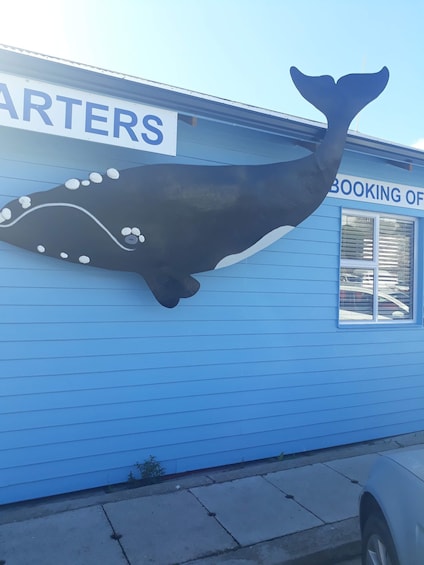- List your property
- Support
- Trips
Communication Center icon - Members save 10% or more on over 100,000 hotels worldwide when you’re signed in





From Cape Town: Hermanus Whale Watching Tour with Transfer
Features
- Free cancellation available
- 8h
- Mobile voucher
- Instant confirmation
- Selective hotel pickup
Overview
- Marvel at the Whales
- Take in scenic views of the Beautiful landscapes
- Explore the Small Town of Hermanus
Activity location
- Cape Town
- Cape Town, Western Cape, South Africa
Meeting/Redemption Point
- Cape Town
- Cape Town, Western Cape, South Africa
Check availability
From Cape Town: Hermanus Whale Watching Tour with Transfer
- 8h
Activity duration is 8 hours 8h - English
What's included, what's not
- Hotel pick up and drop off
What's included What's included - Bottled water
What's included What's included - Air conditioned vehicle
What's included What's included - Driver Guide
What's included What's included - Whale Watching Boat Ride
What's included What's included - Lunch
What's excluded What's excluded - Service charge
What's excluded What's excluded
What you can expect
You will be picked up from your hotel.
As we will have a 2 hour long drive, we will pass some of Cape Town's Most Nutorious Townships.
Driving Northeast out of the City on the National 2 road, we will pass the first township Langa. Langa is a 'Xhosa' word, meaning Sun. This is the oldest township in Cape Town. Each township in Cape Town has minimum 2 Primary Schools, 2 High Schools, 1 Police Station and 1 Public clinic. That is all there is accomodate the Community. Langa also has its own local economy, and has seen it grown from strength to strength over the years.
Next we will pass the Cape Town International Airport. This is Africas most award winning Airport.
Then we wi pass 'Khayelitsha '. In Xhosa it means ' our new home'. This is the biggest Township in Cape Town with approximately 500 thousand inhabitants. Most of these residents work in Town, and take public transport on a daily basis. Some of them also work in Stellenbosch, as this is closer to home.
Next we will pass the Cape Town Film Studio. The film industry grew rapidly in Cape Town during the Lockdown. This is where the Pirate Caribbean and Black Snails were shooted.
Then we will pass the wine region, namely Stellenbosch. There is over 300 wine farms in this region. Wine is also one of the biggest things we export to the world from the Table Bay Harbour.
Then we will Pass Somerset West. A small town out of the city with approximately 60 000 onhabitants. This small town is known for the Bomb Factory.
Next we will Pass Sir Louwry's Pass. This is one of the most beautifull Passes in the Western Province. As we drive through the pass, we will pass the Steenbras Dam. This is one of 44 Dams supplying water to the Western Province.
Last we will turn off for Hermanus, where we will go to the Harbour to do the Whale watching.
The boat ride is 2 to 3 hours long. You will be able to see the Southern Right whales. They are called the Southern Right, because they were the right whales to catch in the early days, they are not shy and comes close to the shore. 'Southern', because they come to the South coast. They comes to our coast to mate and the mothers comes to give birth. After that they go back to the South Pole where they come from, because that is where their food is. They eat up to 6ookg of food per day in the South Pole, that is why they can stay for up to 7 months without food in our ocean.
Location
Activity location
LOB_ACTIVITIES LOB_ACTIVITIES - Cape Town
- Cape Town, Western Cape, South Africa
Meeting/Redemption Point
PEOPLE PEOPLE - Cape Town
- Cape Town, Western Cape, South Africa